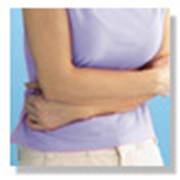
Menstrual pain is frequently experienced by menstruating women. Women may grumble because it disturbs their daily activities and causing them to miss schools or works.
What is menstrual pain?
Menstrual pain is the pain experienced at lower abdomen or pelvis during menstruation.
Pelvis is part of the body where the womb, ovaries, fallopian tubes and urinary bladder are located.
In medical term, menstrual pain is called ‘dysmenorrhoea’. There are two types of dysmenorrhoea.
Primary dysmenorrhoea
This type of menstrual pain often occurs in adolescent girls. In primary dysmenorrhea, there is absent of abnormality in the pelvis and womb. It usually occurs 6 to 12 months after puberty when the ovulation cycle started. It may also happen among women in reproductive age.
Secondary dysmenorrhoea
This type of menstrual pain is caused by abnormality in the pelvis and womb. It usually occurs among advanced and reproductive age women. The causes include:
- Endometriosis. This condition occurs in 5-15% of menstruating women.
- Ovarian cyst and tumour
- Uterine fibroid (growth in the womb). The menstrual pain usually occur during heavy menstrual flow
- Infection in the womb and fallopian tube (Pelvic inflammatory disease)
- Congenital abnormality of the womb (example: bicornuate uterus, septate uterus)
- Intrauterine contraception device (IUCD). Menstrual pain may be worsened in certain women using IUCD.
Epidemiology
More than 60% of adolescent girls experienced primary dysmenorrhea. 1 in 10 women experienced severe menstrual pain causing disturbance in their daily activities.
It happens frequently in smokers, those with early puberty and heavy menses. It happens less in women who ever have or recently give birth and using contraceptive pills.
Symptoms
- Pain at lower abdomen. The pain is usually moderate and cramping, and may spread to the back and thighs.
- Primary dysmenorrhoea: The pain is worst on the first two days of menstruation and followed by minimal pain thereafter. The pain stops at the end of menstruation. It usually lasted for 12-24 hours, sometimes between 2-3 days. The pain is less severe with increasing age and after giving birth.
- Secondary dysmenorrhea. The menstrual pain is similar to primary dysmenorrhea but prolonged, starting before menses and getting worse. It gets worse after few years of normal menstruation. The following are signs that may indicate that you are having secondary dysmenorrhea:
- Irregular menses
- Pain in between menses
- Heavy menstrual flow
- Vaginal discharge
- Pain during sexual intercourse
See a doctor if you are having the above symptoms
- Headache, giddiness, lethargy, back pain
- Nausea, vomiting and diarrhoea
Treatment
- Anti-inflammatory medications (examples: mefenamic acid, naproxen
About 80% of women who use this medicine have reduced or ceased menstrual pain. The medicine is taken when the pain started or at the start of menstruation. - Pain-killers (example: paracetamol)
Pain-killer is used when anti-inflammatory medication is not suitable to be used due to the side effects or contraindicated. It can also be taken together with anti-inflammatory medications if the use of one type of medication does not reduce the pain. - Oral contraceptive pills.
It is usually used for primary dysmenorrhea to:- reduce the menstrual flow and shorten the menstrual duration by inhibiting ovulation
- reduce or cease the menstrual pain by reducing the production of prostaglandin by uterus lining
- prevent conception
- Heat therapy
Menstrual pain usually happens temporarily. It may be reduced by using heat from bottle filled with warm water or warm pack placed on the lower abdomen or by bathing with warm water. - TENS machine (“Transcutaneous Electrical Nerve Stimulation”)
This may be used if medicine is not preferred by the patient. It produces small electrical current that prevent the transmission of pain sensation from the nerve to the brain. This will reduce the pain sensation.
What is the treatment for secondary dysmenorrhea?
The treatment depends on the cause of secondary dysmenorrhoea. Please see a doctor for further treatment.
References
- Klein JR & Litt IF (1981) Epidemiology of adolescent dysmenorhea. Pediatrics 68, 661-4
- Harlow SD, Park M.A longitudinal study of risk factors for the occurrence, duration and severity of menstrual cramps in a cohort of college women.Br J Obstet Gynaecol.Nov1996;103(11):1134-42.
- Dewhurst’s textbook of Obstetrics and Gynaecology, 7th edition 2007
| Last Reviewed | : | 23 August 2019 |
| Writer | : | Dr. Yee Lee Eng |
| Translator | : | Dr. Nor Faizah bt. Ghazali |
| Accreditor | : | Dr. Hj. Mohamed Hatta bin Mohamed Tarmizi |
| Reviewer | : | Dr. Rafaie bin Amin |







